Blood PlasmaBlood plasma is a frequently overlooked component. The function of the body depends on platelets, red blood cells, and white blood cells. But plasma also has a significant impact. The blood components are transported throughout the body by this fluid. 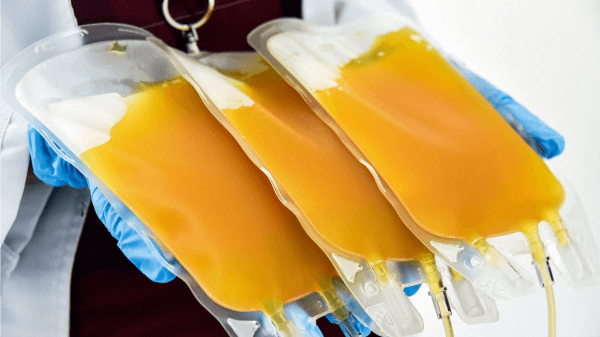
The liquid portion of the blood is called blood plasma. Blood has different components like platelets, erythrocytes, leukocytes, and other blood cells. A normal human body has approximately 5 to 6 quarts or 5 liters of blood. Facts About PlasmaThe majority of your blood is plasma. The component of blood which occupies more than half of the blood is plasma. Blood contains 55% plasma. Plasma is a pale yellow liquid that forms when the blood is separated from the rest of it. Plasma functions in carrying different molecules throughout the blood to different parts of the body. Molecules carried by plasma are different salts, water, and certain enzymes. 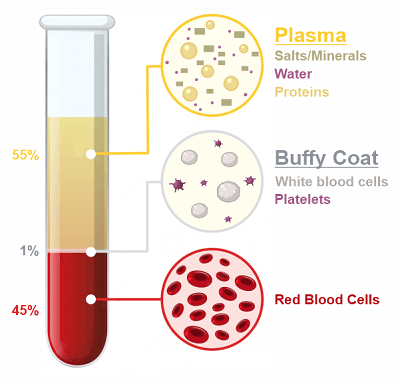
The main function of plasma is to transport important molecules in the body, like hormones, nutrients, and proteins. Additionally, plasma is where cells dump their waste. The plasma then aids in the body's elimination of this waste. Even the components of the blood, like RBC, WBC, and other proteins, are transported through plasma in the circulatory system. Role Of Plasma in The Health of The BodyMany health issues require blood plasma as a vital component of treatment. For this reason, people are asked to donate blood plasma at blood donation drives. Plasma also has vital components, such as water, salt, and enzymes. These contain clotting elements, albumin, fibrinogen, and antibodies. Healthcare professionals can extract these essential components from your plasma when you give blood. Then, these components can be condensed into a variety of goods. Then, these items are employed as remedies to help those experiencing burns, shock, trauma, and other medical situations save their lives. The proteins and antibodies present in the plasma are used to treat various uncommon, chronic diseases. These include hemophilia and autoimmune diseases. Because of the treatments, people with these diseases can lead full and active lives. Because of all the help in treatments that have come from plasma, it is referred to as the "gift of life" by many medical institutions. Donating PlasmaYou must go through a screening procedure if you wish to give plasma to those in need. This is done to guarantee the safety and health of your blood. Every subsequent appointment at the clinic will take roughly an hour and a half if you are eligible to donate plasma. 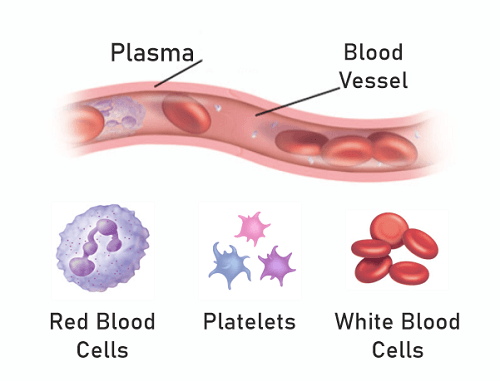
Your blood is taken during the actual blood donation procedure using a needle inserted into a vein in one of your arms. Your blood sample is processed using a specialized machine that separates the platelets and plasma. Plasmapheresis is the name of this procedure. A small amount of salt is added afterward in the form of salt solution to the remaining RBCs, and then they are returned to the body. Most plasma donors are of blood type AB, which is in high demand. Their plasma is ubiquitous and only makes up 2 in every 50 persons. This implies that anyone can use their plasma. Every 28 days, up to 13 times a year, anyone can donate plasma at non-profit donation centers. Who Should Donate Plasma?The Red Cross urges people with blood type AB to think about donating plasma. Patients with any blood type can receive AB, the only universal plasma. As a result, type AB plasma transfusions can be administered right away without wasting valuable time checking the patient's blood type compatibility. Saving time is crucial in emergency medicine, especially when treating patients who have suffered severe burns or substantial trauma. 
Functions of PlasmaYour body's plasma can serve several functions:
Donating PlasmaThere are two methods for giving plasma: When giving whole blood, a medical professional inserts a needle into an arm vein and pulls blood. Plasma will then be separated in a lab as necessary. 
When donating plasma alone (plasmapheresis), a medical professional will insert a needle into a vein in your arm to take blood, much like when you have entire blood removed. A centrifuge spins the blood as it enters it, separating the plasma from the blood cells and platelets. After removing the separated plasma, the apparatus returns the remaining blood components to your body as saltwater (saline) solution. Within 24 hours of taking plasma from your body, the lab freezes the donated plasma to protect the immunoglobulins and clotting factors. A year is the shelf life of frozen plasma. Although plasma from donors with blood type AB is preferred since it does not contain antibodies and can be administered to people of any blood type, anyone can contribute. Where is Plasma Developed?Your umbilical cord cells make plasma cells in the embryo. Plasma proteins are created after development in your spleen, liver, blood cells toward the end of their life, and the soft tissue of your bones (bone marrow). 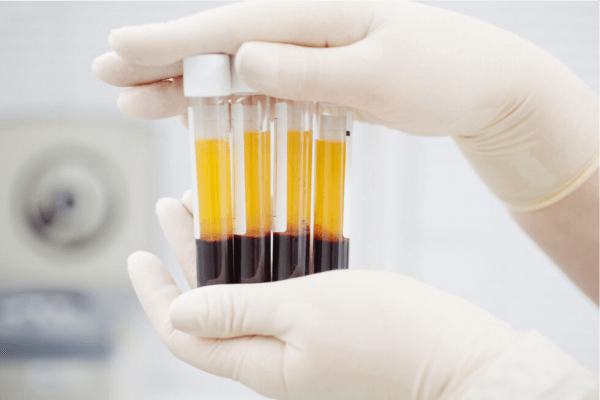
What Does Plasma Look Like?A liquid is plasma. It has a straw-like appearance and a pale-yellow tint. Although plasma accounts for more than half of the overall volume of your blood, the color of your whole blood is mostly determined by red blood cells. Percentage Of Blood Plasma55% of the blood comprises plasma. White blood cells and platelets make up the next 44% of your blood's volume, leaving just 1% for red blood cells. How Can Plasma Be Distinguished from Other Blood Constituents?Your blood sample is separated into multiple layers while it spins in a centrifuge machine (centrifugation). Your blood cells (red and white) and platelets are found in the bottom layer of the yellow top layer of plasma. Components of Blood PlasmaBlood plasma is made up of the following:
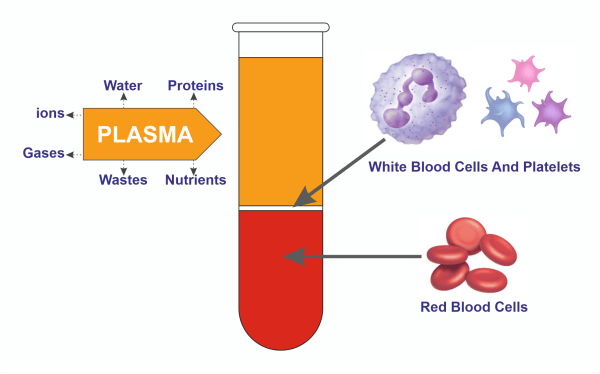
Proteins In PlasmaSeveral proteins can be found in plasma, including:
Communicable Infections Through PlasmaYour healthcare practitioner will test your blood for communicable infections following removal to guarantee the security of your blood sample. Your healthcare practitioner will also test your plasma at the same procedure for the same disorders, like HIV, syphilis, or Hepatitis A, B, and C. Diseases or Health Conditions Impacting Blood PlasmaBlood plasma can be impacted by a number of uncommon disorders, including:
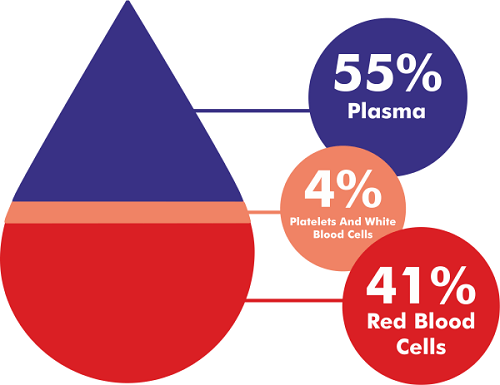
Plasma AbnormalitiesThe following are signs of plasma conditions:
What Procedures Evaluate the State Plasma in the Body?To determine the state of the plasma, there are numerous tests available:
Maintaining Healthy PlasmaMaintaining plasma health involves:
ConclusionPlasma is the fluid that binds your red, white, and platelet blood cells together and is necessary for your body to function. Your plasma donation helps others lead healthy lives despite the rarity of plasma diseases.
Next TopicBlood Sugar Level
|
 For Videos Join Our Youtube Channel: Join Now
For Videos Join Our Youtube Channel: Join Now
Feedback
- Send your Feedback to [email protected]
Help Others, Please Share










